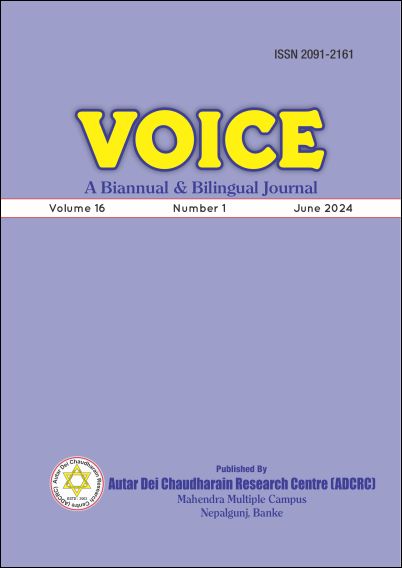Stability Evaluation of Lanedada Twin Tunnel in KTFT
DOI:
https://doi.org/10.3126/voice.v16i1.67419Keywords:
Pillar width, Twin tunnel, Squeezing, Tunnel deformationAbstract
The construction of underground tunnels, particularly in roadway systems, is a highly complicated and demanding process, necessitating careful consideration of geological variability, environmental impact, and safety concerns. This thesis emphasizes the critical importance of determining the optimal separation between twin tunnels, balancing the need for environmental conservation, economic efficiency, and structural stability. The study particularly focuses on the Kathmandu Terai/Madhesh Fasttrack (KTFT), a major expressway project in Nepal, which includes twin tunnels at three different sites under varying geological conditions. A detailed case study is conducted on the Lanedada Twin Tunnel, spanning 1.430 kilometers through the Siwalik Hill. Various methodologies, including empirical, analytical, and numerical approaches, are employed to assess tunnel stability. The findings reveal discrepancies in predictions of tunnel squeezing, with Singh et al.'s method indicating no squeezing potential, while Goel et al.'s method identifies squeezing in half of the evaluated sections. Additionally, the approaches by Hoek and Marino (2000) and Shrestha and Panthi (2015) are applied to estimate tunnel deformation at six specific locations. An analysis of rock support systems using the Rock Massm Rating (RMR) classification and the Q system is presented. Special attention is given to the section at 34+160, where the RS2 software is utilized to simulate varying pillar widths between the twin tunnels, allowing for a comparative analysis of different scenarios. This research aims to contribute to the understanding and implementation of safer, more feasible twin tunnel constructions, thereby enhancing the effectiveness of large-scale infrastructure projects.
Downloads
Downloads
Published
How to Cite
Issue
Section
License
Copyright (c) 2024 The Author(s)

This work is licensed under a Creative Commons Attribution-NonCommercial 4.0 International License.
CC BY-NC: This license allows reusers to distribute, remix, adapt, and build upon the material in any medium or format for noncommercial purposes only, and only so long as attribution is given to the creator.




